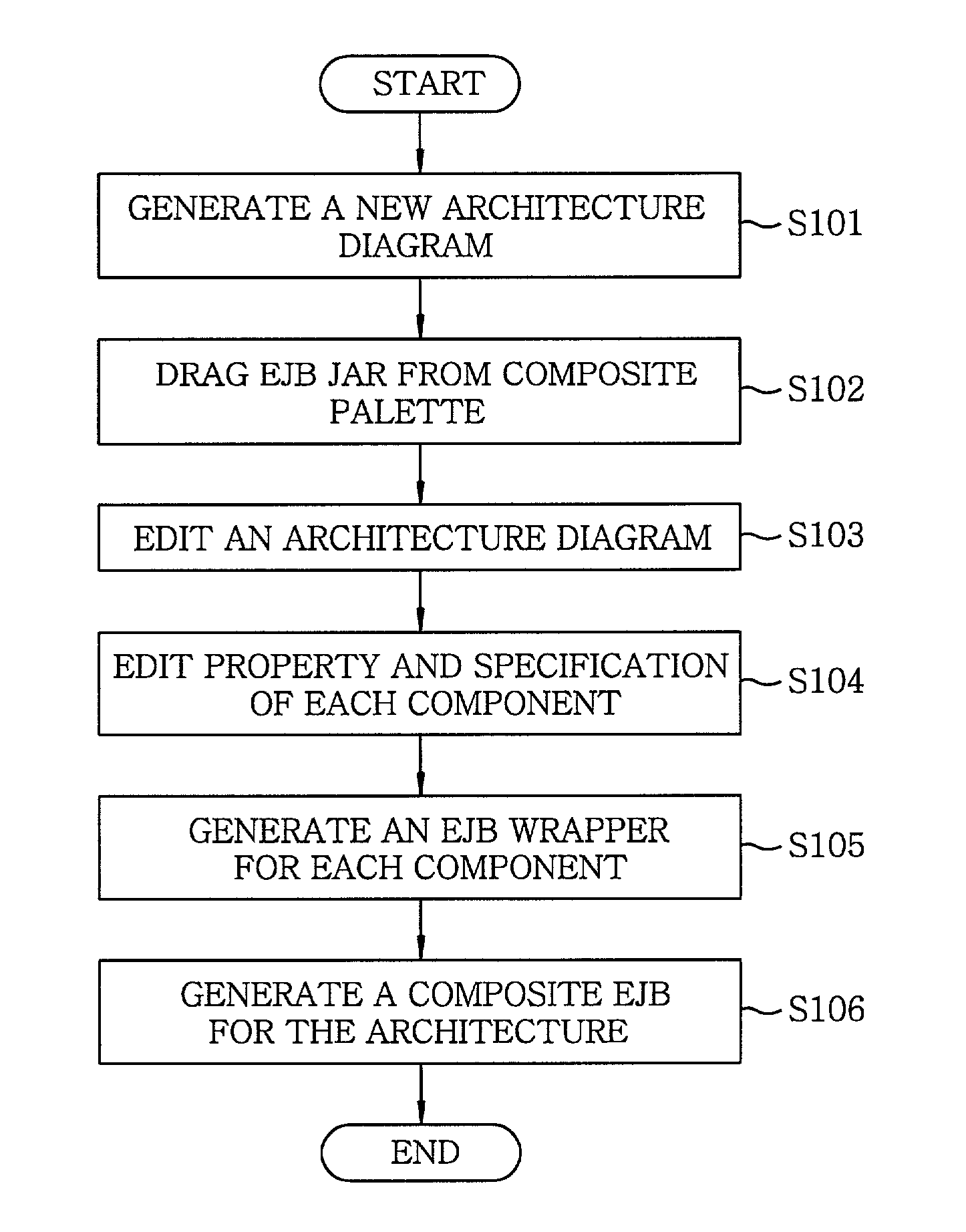Method and apparatus for assembling Enterprise JavaBeans components
a technology of enterprise javabeans and components, applied in the direction of static indicating devices, instruments, program control, etc., can solve the problems of difficult to assemble various ejb components provided by third parties using a plug-and-play style, difficult to assemble components generated based on different infrastructures or middleware with a plug-and-play style, and system integration cannot be achieved
- Summary
- Abstract
- Description
- Claims
- Application Information
AI Technical Summary
Benefits of technology
Problems solved by technology
Method used
Image
Examples
Embodiment Construction
[0033]Referring to FIG. 1, there is provided a flow chart of a system operation in accordance with the present invention.
[0034]Firstly, an architecture modeling process is performed. A new architecture diagram is generated (step S101) and an EJB jar for composing an architecture is dragged and dropped from a composite palette (step S102). Thereafter, interactions of the components are considered to place connectors between the components and, then, links are established between the components and connectors, or between the connectors themselves (step S103).
[0035]Next, a component specification is created for defining interfaces of each component and the interactions between the components (step S104). During this process, a component specification editor of a wizard type provides a user with interaction information between components, EJB component information and so on, thereby allowing an easy creation of the specification.
[0036]Thereafter, an EJB wrapper file, a glue code for con...
PUM
 Login to View More
Login to View More Abstract
Description
Claims
Application Information
 Login to View More
Login to View More - R&D
- Intellectual Property
- Life Sciences
- Materials
- Tech Scout
- Unparalleled Data Quality
- Higher Quality Content
- 60% Fewer Hallucinations
Browse by: Latest US Patents, China's latest patents, Technical Efficacy Thesaurus, Application Domain, Technology Topic, Popular Technical Reports.
© 2025 PatSnap. All rights reserved.Legal|Privacy policy|Modern Slavery Act Transparency Statement|Sitemap|About US| Contact US: help@patsnap.com



